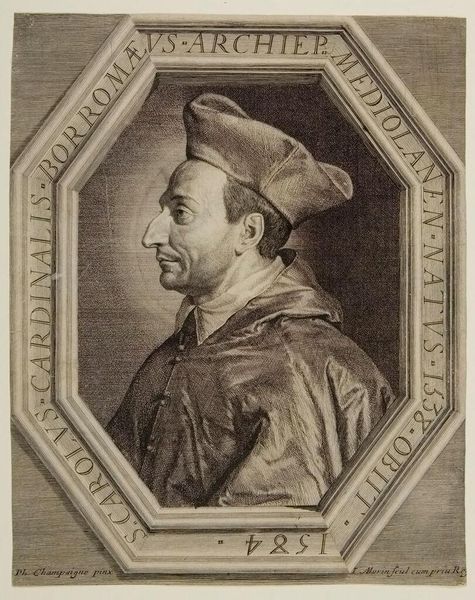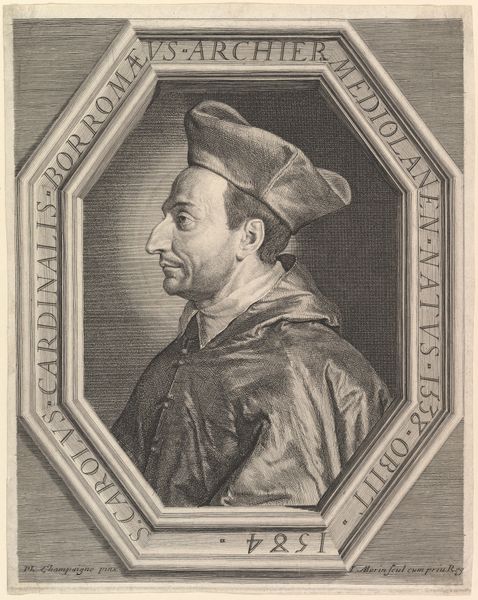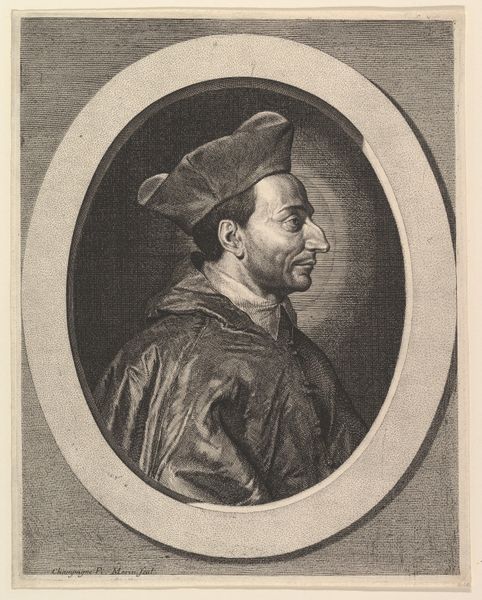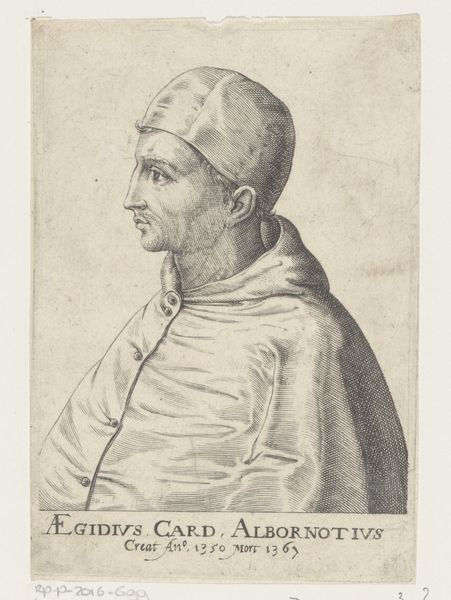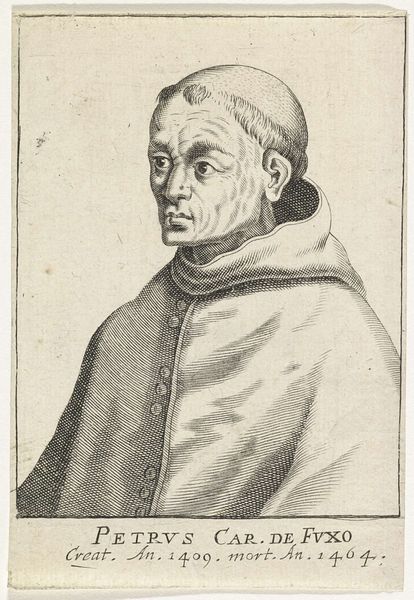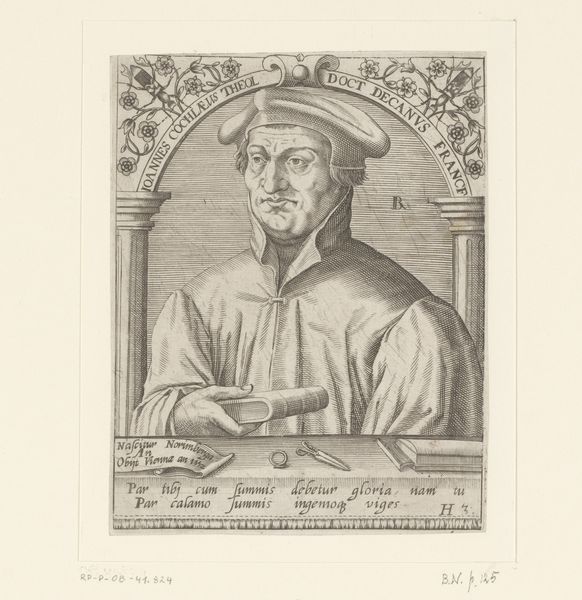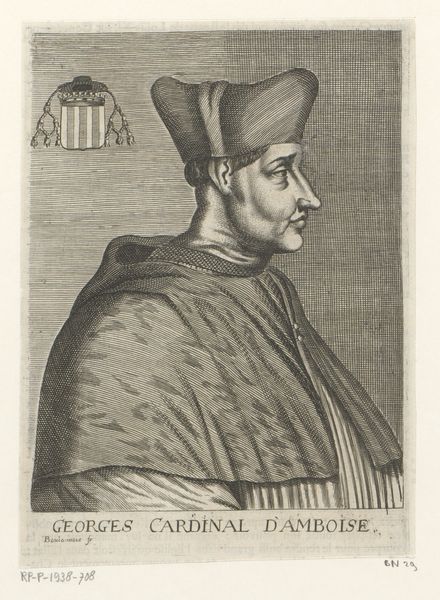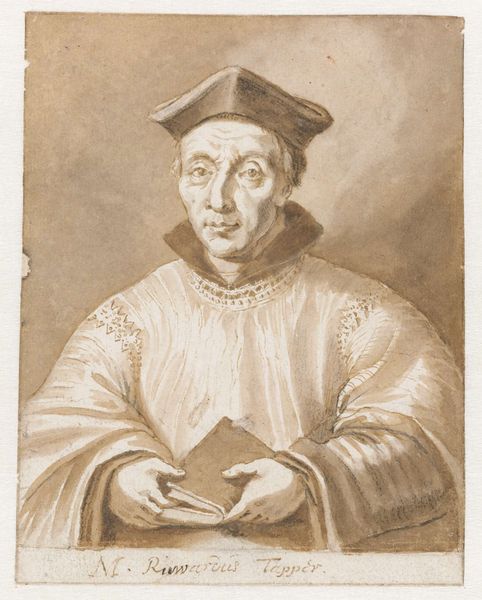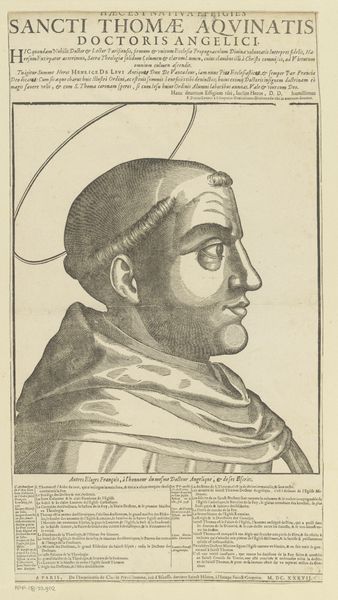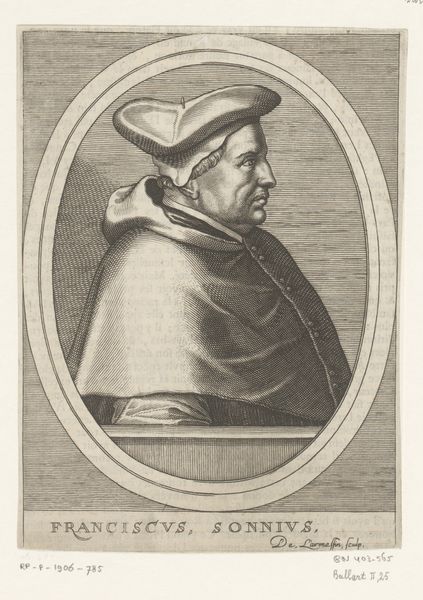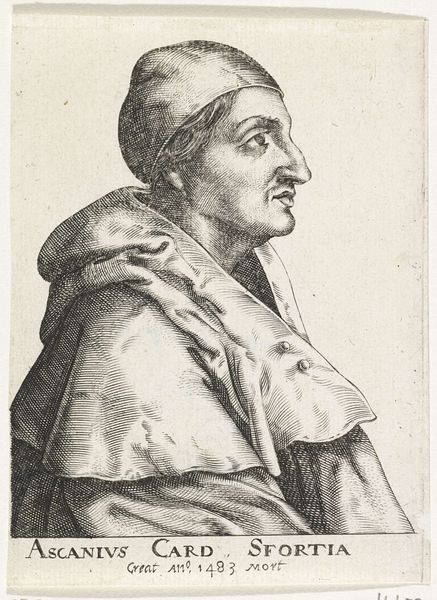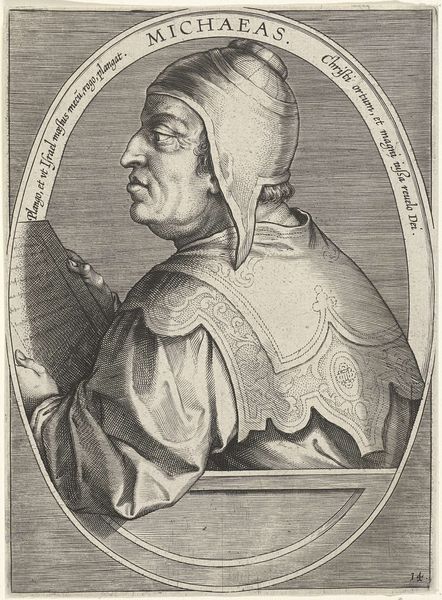
print, engraving
#
portrait
#
baroque
# print
#
old engraving style
#
charcoal drawing
#
portrait reference
#
engraving
Dimensions: height 200 mm, width 160 mm
Copyright: Rijks Museum: Open Domain
Editor: This is a print of "Portret van de H. Carolus Borromeüs" made between 1627 and 1678 by Jan Thomas. The details in the engraving give the portrait a noble quality, even if the overall feeling of the piece is austere. What compositional elements stand out to you in this work? Curator: Primarily, the linear quality defines this portrait. The engraver’s meticulous strokes construct not only the likeness of Borromeüs but also the very substance of the image. Notice how the density of lines dictates the tonal variations, moving from lighter areas highlighting his face, to denser shading evoking depth within the folds of his garment. How does this stark contrast affect your reading of the work? Editor: I see what you mean; the face is bathed in light, which really does set off the detail in the facial features. That contrast with the darkness definitely adds a lot of drama to what could have been a more straightforward portrait. Curator: Precisely. And observe the orthogonals, those implied lines receding into space created by the architectural details. They don’t just create perspective, but subtly guide the eye, anchoring the figure within the pictorial space, generating a sense of formal stability. The formal rigor reinforces the subject's authority. Editor: That makes a lot of sense. So, focusing on the line work and structure allows us to read the artwork in terms of its design rather than any historical information. Curator: Exactly. Through analyzing those pictorial elements alone, we start to understand the intentions behind the print and the skill used to accomplish it. Editor: I never really considered an engraving having such intricate details and intention beyond just replicating an image. Curator: Seeing art this way helps strip away assumptions, forcing a dialogue directly with the visuality of the object.
Comments
No comments
Be the first to comment and join the conversation on the ultimate creative platform.
